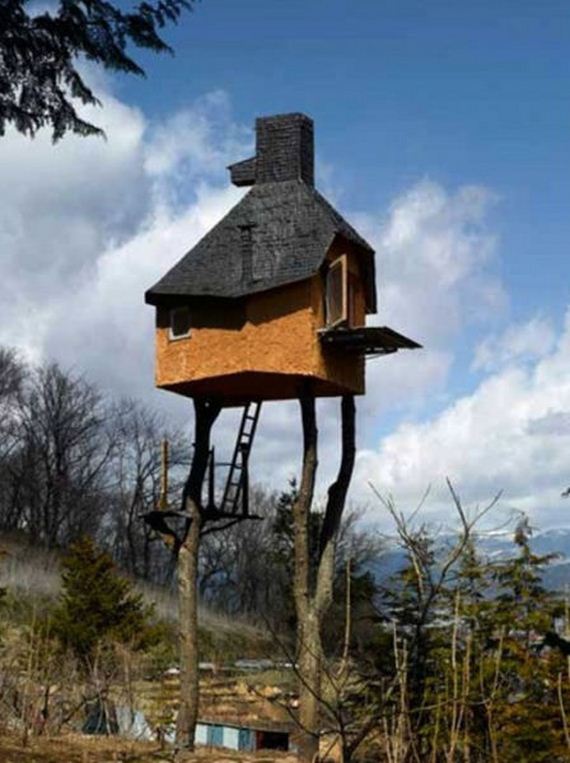In the realm of aesthetics and architectural grandeur, the question often arises: which is more impressive? Is it the intricacy of nature’s creations or the awe-inspiring structures fashioned by human ingenuity? As we embark on this exploration, we must consider a multitude of factors that converge to inform our judgments. It is a discourse not simply about worldly magnificence but rather an examination of perspectives that enables us to appreciate the nuanced beauty found in both realms.
To commence, let us delve into the architectural wonders of our time. Human-built structures stand as testimonials to the ingenuity and creativity that characterize our species. The Great Pyramid of Giza, the Taj Mahal, and the Burj Khalifa are more than just edifices; they encapsulate cultures, historical epochs, and the aspirations of civilizations. These structures evoke an emotional response that transcends mere utility. The complexity involved in their design, the meticulous planning, and the engineering feats achieved through the ages speak to a remarkable capability to transform abstract ideas into concrete realities.
However, juxtaposed against these man-made marvels are the unparalleled creations of nature, which have evolved over eons independently of human influences. Consider the grandeur of geological formations such as the Grand Canyon or the ethereal beauty of the Northern Lights. These natural phenomena not only inspire awe but also serve to remind humanity of its relative insignificance in the grand tapestry of the universe. The intricate patterns of a snowflake or the majestic expanse of a mountain range challenge us to confront the limits of human understanding. Nature’s art is characterized by a subtlety and diversity that can elude even the most creative minds.
This dichotomy raises essential questions about the metrics we employ to gauge impressiveness. Aesthetic beauty is often subjective, shaped by individual experiences, cultural backgrounds, and even psychological predispositions. The visceral impact of a soaring skyscraper may evoke feelings of triumph and progress in one observer, while another may find solace and inspiration in the whispering winds of a tranquil forest. The interplay of these personal reflections serves to enrich our appreciation of both human and natural wonders.
Furthermore, the dialogue between nature and architecture extends beyond personal aesthetics to encompass functional considerations. A building’s design is often predicated upon its purpose, adapting to the needs of its inhabitants. For instance, modern architectural trends increasingly incorporate sustainable practices, seeking to harmonize the built environment with the natural world. Urban structures such as vertical gardens and eco-friendly skyscrapers exemplify a trend where human innovation seeks to mitigate ecological footprints while enhancing visual allure.
Conversely, one might argue that the intrinsic beauty of natural landscapes necessitates no engineering embellishment. Take, for instance, the brilliant colors of a sunset casting an orange hue over a vast ocean. This spectacle occurs without human intervention, yet it resonates deeply with those fortunate enough to witness it. The immutable forces of nature often create a dynamic interplay of light and shadow that can transcend the calculated lines of architectural design.
Moreover, the psychological and emotional dimensions of experiencing either category cannot be overstated. A stroll through a masterfully designed museum may conjure feelings of curiosity and inspiration, as art and architecture converge. Yet, a solitary hike through a serene wilderness might yield introspection and clarity, evoking primal connections to the earth and existence itself. In this regard, the impressive factor shifts from an aesthetic judgment to an experiential one—how does each encounter with the environment stimulate our consciousness and challenge our perceptions?
As we examine the implications of technology and progress, a pivotal aspect arises: how do human advancements in engineering grapple with and respect the majesty of the natural world? The skyscraper that redefines a city’s skyline may simultaneously encroach upon its natural habitat. Thus, we arrive at a crucial point of contention: does building upon the lands that nature has sculpted indicate audacity or hubris? This philosophical Query prompts an evaluation of what we truly deem impressive. Is it the dominance of man over nature or the ability to coexist with it harmoniously?
Furthermore, both architectural feats and natural wonders contribute significantly to our cultural identities and collective understanding of beauty. Festivals held in natural settings, such as music festivals nestled in pristine locales, highlight an appreciation of nature’s magnificence, while parades celebrating innovative architecture underscore human creativity. It appears that multiple dimensions coexist, blending the awe associated with natural phenomena and the wonder inspired by architectural masterpieces.
Ultimately, the question of which is more impressive may remain elusive. Perhaps it is not a matter of prioritizing one over the other but rather recognizing the intricate connections between these domains. Each possesses its unique charm—breathtaking, emotional, and intellectually stimulating. Nature and architecture invite us to examine our values, challenge our perspectives, and foster a greater appreciation of the world around us.
In conclusion, as we navigate this compelling dialogue, we are beckoned to embrace a synthesis of both human creativity and natural splendor. Recognition of their interdependence may inspire a shift in perspective, urging a more profound curiosity about our place in this intricate web we inhabit. Thus, rather than seeking to declare dominance in the realm of impressiveness, let us instead celebrate the myriad forms of beauty and ingenuity that grace our existence.












